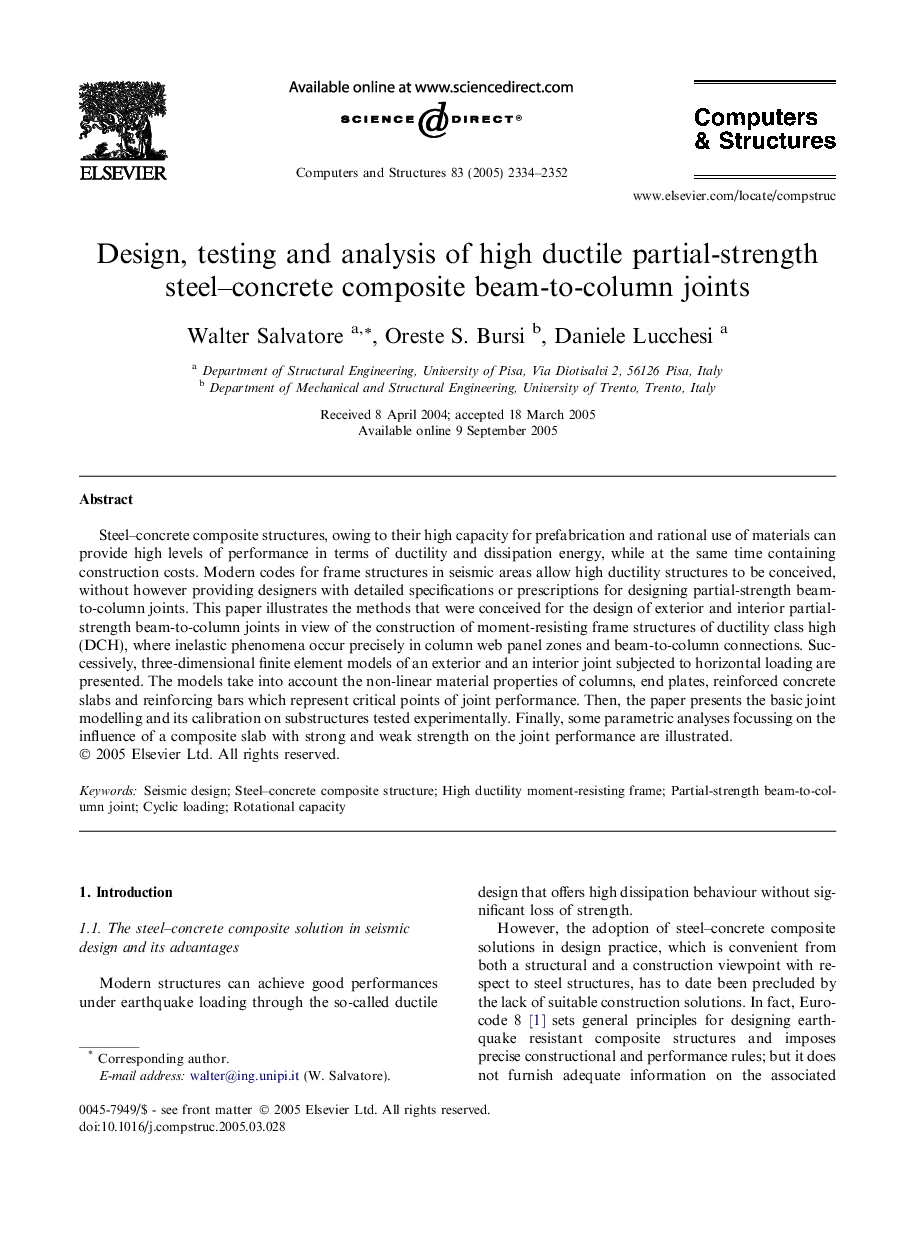| Article ID | Journal | Published Year | Pages | File Type |
|---|---|---|---|---|
| 511927 | Computers & Structures | 2005 | 19 Pages |
Steel–concrete composite structures, owing to their high capacity for prefabrication and rational use of materials can provide high levels of performance in terms of ductility and dissipation energy, while at the same time containing construction costs. Modern codes for frame structures in seismic areas allow high ductility structures to be conceived, without however providing designers with detailed specifications or prescriptions for designing partial-strength beam-to-column joints. This paper illustrates the methods that were conceived for the design of exterior and interior partial-strength beam-to-column joints in view of the construction of moment-resisting frame structures of ductility class high (DCH), where inelastic phenomena occur precisely in column web panel zones and beam-to-column connections. Successively, three-dimensional finite element models of an exterior and an interior joint subjected to horizontal loading are presented. The models take into account the non-linear material properties of columns, end plates, reinforced concrete slabs and reinforcing bars which represent critical points of joint performance. Then, the paper presents the basic joint modelling and its calibration on substructures tested experimentally. Finally, some parametric analyses focussing on the influence of a composite slab with strong and weak strength on the joint performance are illustrated.
